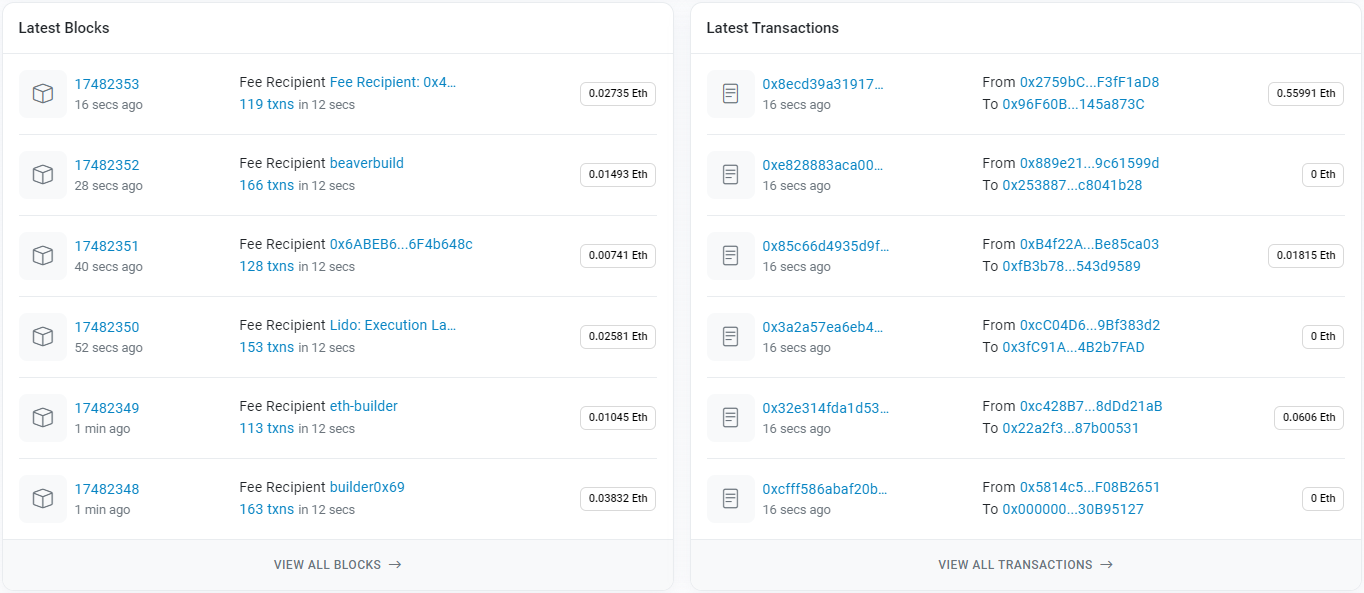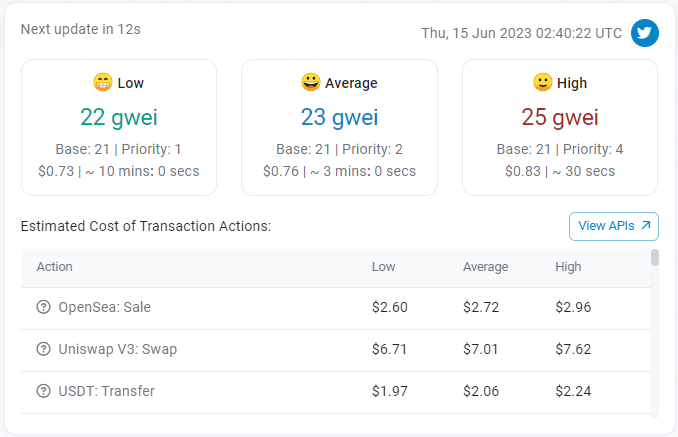When it comes to blockchains, everyone seems to talk about its transparency because anyone can view any wallet address, any transaction that occurs through Blockchain Explorer. So what is Blockchain Explorer? Join Weakhand to learn how to use this tool fluently like a pro.
What is Blockchain Explorer?
Blockchain Explorer is a concept used to refer to websites or applications that provide information about blocks, transactions, hashes, etc. taking place on a specific blockhain like Ethereum. Through Blockchain Explorer people can search for any transaction, wallet address, block, etc. and view its status in a simple way.
Blokchain Explorer continuously aggregates real-time data from nodes or validators on a blockchain and then simplifies it through an API, making it simple for humans to access and read.
Currently, the entire crypto market has many different blockchains operating, so each blockchain will have a separate block explorer. This provides certain insights but also causes some difficulties for users new to the crypto market.
How Blockchain Explorer Works
Blockchain Explorer is a tool that allows users to access and view transaction and block information on the blockchain network. Blockchain Explorers typically retrieve data from the blockchain by querying network nodes and those nodes’ APIs.
Each blockchain network has a certain number of active nodes, containing the entire transaction and block history of that network. When a new transaction or block is confirmed on the blockchain, they are transmitted to nodes and synchronized across the network using standard controllable protocols. Blockchain Explorers will automatically update and display information about that transaction or block through queries to those nodes.
Retrieving data from these network nodes or APIs is done through network query methods. Blockchain Explorers often use the HTTP protocol to query nodes’ APIs or to send query requests to P2P nodes. In some cases using WebSockets can provide a persistent connection to the blockchain network and allow the latest changes or updates to be updated immediately instead of waiting for a query process.
After receiving data from the node or API, Blockchain Explorers will analyze and display information about transactions and blocks on the blockchain network. This information can include wallet addresses, amounts, times, transaction fees, and many other blockchain-related information.
The Importance Of Blockchain Explorer
Blockchain Explorer is considered an important tool in not only monitoring and checking transactions in the blockchain, but also allowing users to identify and verify the correctness of transactions and data in the blockchain.
It provides a very simple information search interface suitable for the vast majority of users compared to having to look at the original data received from nodes with confusing lines of code. Therefore, it is mandatory for blockchains to have at least one Blockchain Explorer as a tool to retain users.
Blockchain Explorer applications can improve user experience and meet the needs of organizations and businesses of all sizes by providing detailed information about transactions and activities on the blockchain, helping to increase Strengthen risk management and improve transparency.
Key Features of a Blockchain Explorer
Because the number of Blockchain Explorers on the market is very large and their features are somewhat similar, we will use Etherscan as the most popular application of Ethereum from which we can operate similarly with other applications. .
Check the overall status of the blockchain

When accessing Etherscan, people can see general information of the Ethereum blockchain such as:
- Current price of ETH.
- Current market capitalization of ETH.
- Total number of transactions that have been made on Ethereum.
- Number of blocks created.
- Average gas price.
View information in real time

When scrolling down below, people can easily see information displayed in real time such as blockchains and transactions that have just occurred.
- To see detailed block information, people just need to click on the block number.
- People can also view transaction details by clicking on the tx hash.
Search for information on blockchain

To search for any information on the blockchain, people just need to enter the correct information in the formats below:
- Wallet address: Usually starts with 0x and has 40 characters after it.
- Tnx hash: Usually starts with 0x and has 64 characters after it.
- Block: Is a series of numbers used to mark the order of the block.
- Tokens: Search by token name or smartcontract taken from coinecko including 0x and 40 characters (smartcontract will be marked differently from a wallet address).
- Domain: Usually has a format starting with the name and ending with “.ETH”.
Check gas

Checking gas before trading is important especially before conducting a transaction on Ethereum because if the gas is too high it will cause the transaction to pay a higher fee to complete the transaction:
- Everyone can Ethereum Gas Tracker via the link: https://etherscan.io/gastracker
- Here Etherscan will display the average gas level as well as the appropriate level so that transactions can take place as quickly as possible.
- In addition, Etherscan also calculates the average gas level when making a transaction on Uniswap or buying an NFT on OpenSea.
Some Popular Blockchain Explorers
Below are the names and access links of some popular Blockchain Explorers:
- Ethereum: https://etherscan.io/
- BNB Chain: https://bscscan.com/
- Solana: https://solscan.io/
- Polygon: https://polygonscan.com/
- Arbitrum: https://arbiscan.io/
- Optimism: https://optimistic.etherscan.io/
- zkSync Era: https://explorer.zksync.io/
- Aptos: https://explorer.aptoslabs.com/?network=mainnet
- Sui Network: https://suiscan.com/
- Avalanche C-Chain: https://snowtrace.io/
- Fantom:
Summary
Above are the necessary things for everyone to understand what Blockchain Explorer is in a simple way. Weakhand hopes that through this article, people will find useful information for their market research process.


